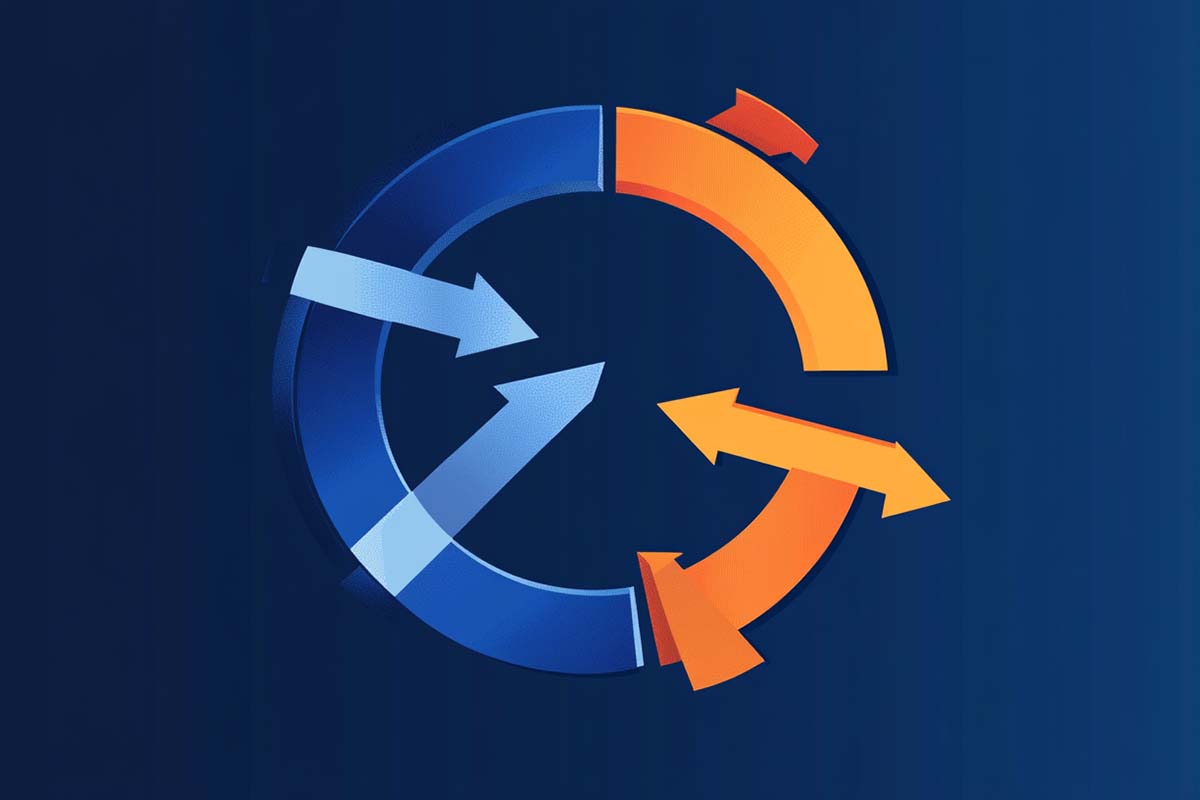| Software Development Lifecycle (SDLC) | The structured process followed in software development, consisting of various stages such as planning, designing, developing, testing, deploying, and maintaining software. |
| Waterfall Model | A linear and sequential approach to software development where each phase must be completed before moving to the next. |
| Agile Methodology | An iterative approach to software development that emphasizes flexibility, customer collaboration, and small, incremental releases. |
| Scrum | A framework within Agile that organizes development into fixed-length iterations called sprints, focusing on small deliverables and continuous improvement. |
| Kanban | A visual workflow management method used to visualize work, optimize flow, and improve efficiency, commonly used in Agile. |
| Lean Development | A software development approach that focuses on reducing waste, improving speed, and delivering value to customers efficiently. |
| DevOps | A set of practices that combines software development (Dev) and IT operations (Ops) to shorten the development lifecycle and deliver continuous integration and continuous delivery (CI/CD). |
| Continuous Integration (CI) | The practice of merging all developers’ working copies to a shared mainline several times a day to detect errors quickly. |
| Continuous Delivery (CD) | An extension of CI, focusing on automating the release process to deliver software updates to production quickly and safely. |
| Version Control | A system that records changes to a file or set of files over time so that you can recall specific versions later, often using tools like Git. |
| Git | A distributed version control system used to track changes in source code during software development, allowing multiple developers to collaborate. |
| Testing | The process of evaluating a software application to detect and fix defects. Types of testing include unit testing, integration testing, system testing, and user acceptance testing (UAT). |
| Unit Testing | A type of software testing where individual units or components of a software application are tested in isolation. |
| Integration Testing | Testing in which individual software modules are combined and tested as a group to ensure they work together correctly. |
| System Testing | A testing phase that validates the complete and integrated software system to ensure it meets the required specifications. |
| User Acceptance Testing (UAT) | The final phase of software testing, where end users validate that the software meets their requirements before it is accepted and released. |
| Requirement Gathering | The process of collecting and documenting all the functionalities and needs of the stakeholders that the software must fulfill. |
| Software Architecture | The high-level structure of a software system, defining how components interact and how the system is organized. |
| Prototyping | Creating an early model or mock-up of the software to demonstrate functionality and gather feedback. |
| Minimum Viable Product (MVP) | A version of a product with just enough features to satisfy early customers and provide feedback for future development. |
| Sprints | Fixed-length periods (usually 2-4 weeks) in Scrum during which specific work is completed and made ready for review. |
| Backlog | A prioritized list of features, tasks, or bug fixes that are maintained to be completed in future sprints or development cycles. |
| Stakeholder | Any individual, group, or organization that has an interest or stake in the outcome of the software development project. |
| Product Owner | In Scrum, the person responsible for defining the features of the product and prioritizing the product backlog according to customer needs. |
| Scrum Master | A role in Scrum that facilitates team communication, ensures adherence to Agile principles, and removes obstacles that may impede progress. |
| Epic | A large body of work that can be broken down into smaller tasks or user stories in Agile methodologies. |
| User Story | A simple description of a software feature from the perspective of the end user, outlining what they want and why. |
| Milestone | A significant point in the project lifecycle that marks the completion of a key deliverable or stage in the development process. |
| Software Maintenance | The process of updating and improving software after its initial deployment, which includes bug fixing, enhancements, and performance improvements. |
| Deployment | The process of delivering the completed software to the customer or making it available for use in the production environment. |
| Release Management | The process of overseeing the planning, scheduling, and controlling of software releases through different stages and environments. |
| Refactoring | The process of restructuring existing code without changing its external behavior to improve non-functional attributes such as readability and maintainability. |
| Technical Debt | The accumulated cost of additional rework caused by taking shortcuts in the development process, usually leading to more complexity over time. |
| Regression Testing | Testing existing software functionality after changes or updates to ensure that new changes have not introduced bugs. |
| Alpha Testing | The initial phase of testing, usually done by internal teams to identify bugs before releasing the software to external testers or users. |
| Beta Testing | A phase of testing where a limited number of external users test the software in a real environment to identify any issues before final release. |
| Documentation | The written descriptions and instructions for the software’s architecture, code, and usage, essential for maintenance and onboarding new team members. |
| API (Application Programming Interface) | A set of rules and protocols that allows different software systems to communicate with each other. |
| Microservices | An architectural style that structures an application as a collection of loosely coupled services, each of which is responsible for a specific function. |
| Cloud Computing | Delivering various services over the internet, including software development environments, storage, and hosting, without needing on-premises infrastructure. |
| Agile Manifesto | A set of values and principles for software development that promotes flexibility, collaboration, and responsiveness to change. |











